

Chemopreventive natural dietary compounds1
Many natural dietary compounds in fruits, vegetables or herbs have been isolated and have demonstrated health-promoting properties. They can be categorized into several classes as below describing the chemopreventive effects of selected natural dietary compounds.
1. Carotenoids
Carotenoids, also called tetraterpenoids, are organic pigments that are found in the chloroplasts and chromoplasts of plants and some other photosynthetic organisms, including some bacteria and some fungi. Carotenoids belong to the category of tetraterpenoids (i.e., they contain 40 carbon atoms, being built from four terpene units each containing 10 carbon atoms). Structurally, carotenoids take the form of a polyene hydrocarbon chain which is sometimes terminated by rings, and may or may not have additional oxygen atoms attached.
Table 1 Chemopreventive mechanisms of major carotenoids1
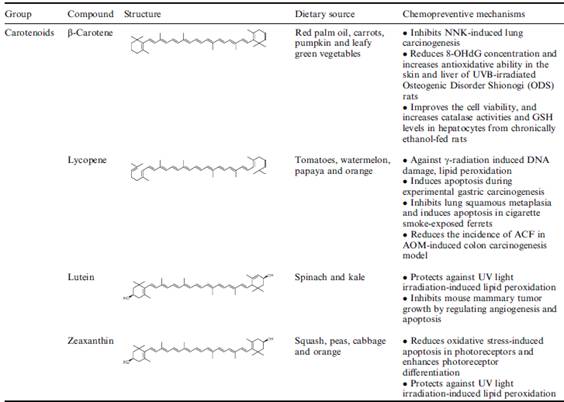
2. Flavonoids
Flavonoids (or bioflavonoids) (from the Latin word flavus meaning yellow, their color in nature) are a class of plant and fungus secondary metabolites.
Chemically, they have the general structure of a 15-carbon skeleton, which consists of two phenyl rings (A and B) and heterocyclic ring (C). This carbon structure can be abbreviated C6-C3-C6. According to the IUPAC nomenclature, they can be classified into:
· flavonoids or bioflavonoids
· isoflavonoids, derived from 3-phenylchromen-4-one (3-phenyl-1,4-benzopyrone) structure
· neoflavonoids, derived from 4-phenylcoumarine (4-phenyl-1,2-benzopyrone) structure
Table 2 Some flavonoids and their chemopreventive activies1
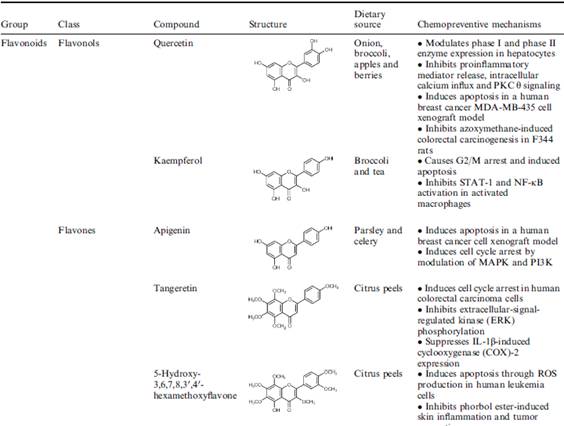
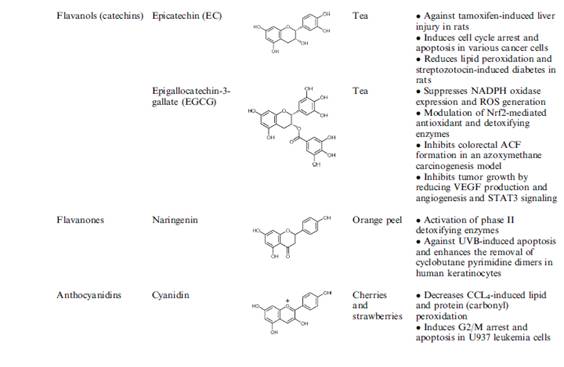

3. Proanthocyanidins and flavonolignans
Proanthocyanidins are a class of polyphenols found in a variety of plants. Chemically, they are oligomericflavonoids. Flavonolignans identified in Silybum marianum (milk thistle) silymarin complex include silibinin, silychristin, silydianin, dehydrosilybin, deoxysilycistin, deoxysilydianin, silandrin, silybinome, silyhermin and neosilyhermin and can be produced in vitro.
Table 3 Suggested chemopreventive mechanism of proanthocyanidins and flavonolignans1
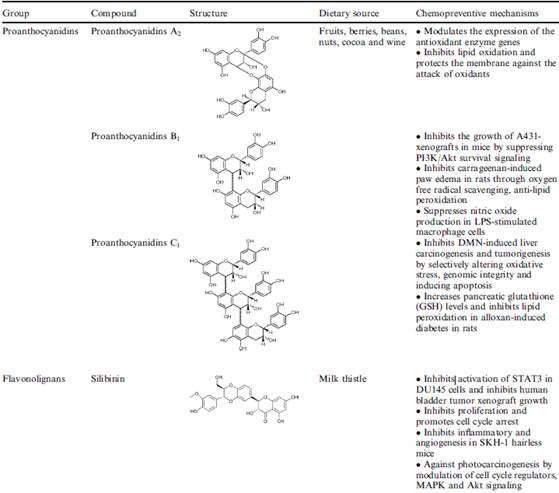
4. Other polyphenolic compounds
Table 4 Chemopreventive effects of other polyphenolic compounds1
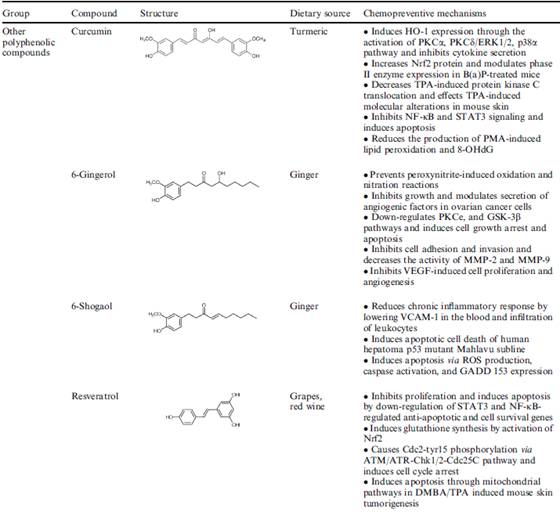
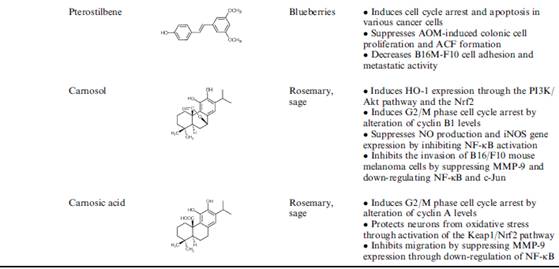
5. Isothiocyanates
Isothiocyanate is the chemical group –N=C=S, formed by substituting the oxygen in the isocyanate group with a sulfur. Many natural isothiocyanates from plants are produced by enzymatic conversion of metabolites called glucosinolates.
Table 5 Chemopreventive effects for major isothiocyanates1
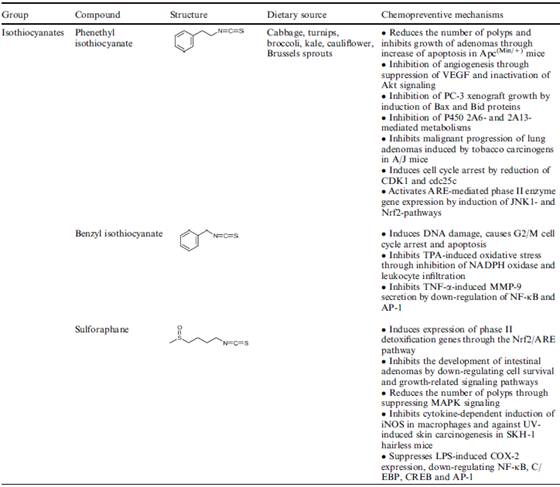
6. Terpenoids
The terpenoids are a class of secondary metabolites from the common origin of mevalonate and isopentenyl pyrophosphate that are lipophilic in nature. Plant terpenoids are used extensively for their aromatic qualities and play a role in traditional herbal remedies. Terpenoids contribute to the scent of eucalyptus, the flavors of cinnamon, cloves, and ginger, the yellow color in sunflowers, and the red color in tomatoes. Well-known terpenoids include citral, menthol,camphor, salvinorin A in the plant Salvia divinorum, the cannabinoids found in cannabis, ginkgolide and bilobalide found in Ginkgo biloba, and the curcuminoids found in turmeric and mustard seed.
Table 6 Structures of some terpenoids and their target functions in chemoprevention1
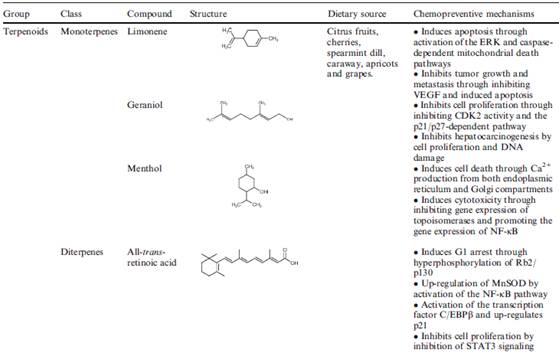
Reference:
1. Min-Hsiung Pana and Chi-Tang Ho*bc, Chemopreventive effects of natural dietary compounds on cancer Development, Chemical Society Reviews 2008, 37,